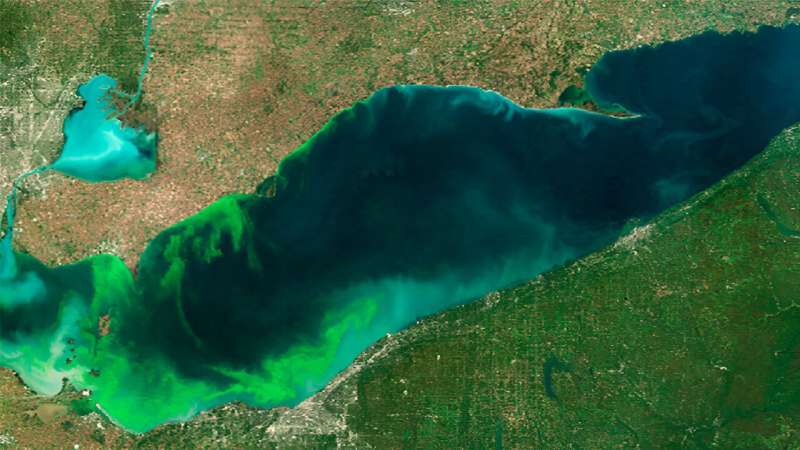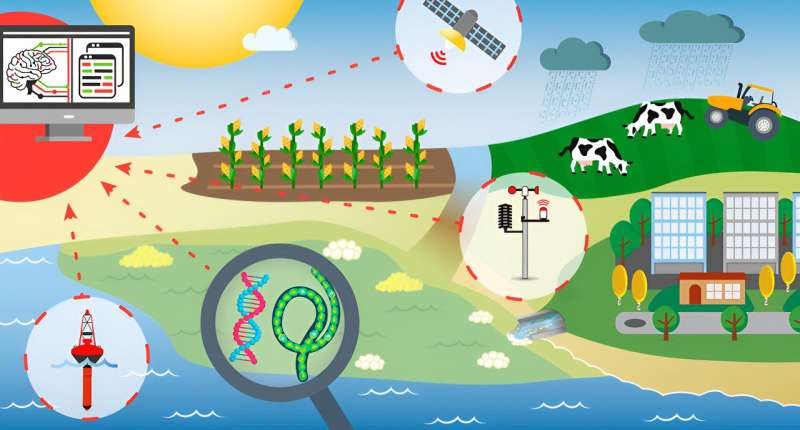This article has been reviewed according to Science X's editorial process and policies. Editors have highlighted the following attributes while ensuring the content's credibility:
fact-checked
peer-reviewed publication
trusted source
proofread
AI can help forecast toxic 'blue-green tides'

A team of Los Alamos National Laboratory scientists plan to use artificial intelligence modeling to forecast, and better understand, a growing threat to water caused by toxic algal blooms. Fueled by climate change and rising water temperatures, these harmful algal blooms, or HABs, have grown in intensity and frequency. They have now been reported in all 50 U.S. states.
"Harmful algal blooms are appearing in areas where, historically, they were never present," said Babetta Marrone, senior scientist at the Lab and the project's team lead. "The ecosystem of organisms that cause these blooms is very complex. And the information we do have about when, and why, these blooms form is dispersed through a variety of local, state, federal, and international databases. This is one area where we believe AI can help."
Each year, so-called "red tides" and "blue-green tides" close beaches and lakes, kill untold number of aquatic animals, and cause billions of dollars in economic damage. Scientists need modern tools to reliably understand the physical, chemical, and biological processes that dictate HAB toxicity and prevalence to predict and mitigate these outbreaks. The Los Alamos team has detailed a process through which artificial intelligence models can help unravel these mysteries.
Understanding the HAB ecosystem
Researchers have collected data on HABs since 1954. For decades, scientists have understood that elevated water temperatures, combined with sudden infusions of nutrients (often phosphorous and nitrogen runoff from industrial farming), tend to precede a HAB event. This sudden imbalance of nutrients can lead to the explosive growth of cyanobacteria, which occurs naturally in freshwater.
Under these conditions, cyanobacterial species such as Microcystis aeruginosa can form dense blankets on the water surface, eventually releasing microcystin, a toxin that can sicken or kill organisms including fish, wildlife, and humans.

But what causes toxic cyanobacteria to prevail in these freshwater ecosystems has proved challenging to understand. Cyanobacterial HABs are complex ecosystems influenced by hundreds—sometimes thousands—of other microorganisms.
"Large genomic datasets of cyanobacterial HABs are becoming more available," Marrone said. "Our team plans to mine these datasets with machine learning and artificial intelligence models to understand the relationship between cyanobacteria and the many other microorganisms present in the water body over the course of the algal blooms. This will let us identify the key functional relationships that cause toxin production."
A path toward forecasting
Another major impediment to understanding, and thus forecasting, algal blooms is the data itself. Existing research has been independently collected by a variety of organizations across the nation and the world, some of it by citizen scientist groups. Much of this data was sampled with varying instruments, then logged in different formats.
In their recent publication, Marrone's team outline how AI and machine learning models can decipher and analyze this disparate data. This would allow scientists to better understand the conditions that create HABs, the first step in forecasting these outbreaks.
"Our goal is to feed existing information into a model that takes advantage of data gleaned from water sampling, weather telemetry stations, satellite sensing data, and the newly emerging biological data," Marrone said. "Such a model could then be used to forecast algal blooms, and possibly even predict how climate change will alter their intensity and frequency in the future."
The research has been published in the journal ACS ES&T Water.
More information: Babetta L. Marrone et al, Toward a Predictive Understanding of Cyanobacterial Harmful Algal Blooms through AI Integration of Physical, Chemical, and Biological Data, ACS ES&T Water (2023). DOI: 10.1021/acsestwater.3c00369
Journal information: ACS ES&T Water
Provided by Los Alamos National Laboratory




















